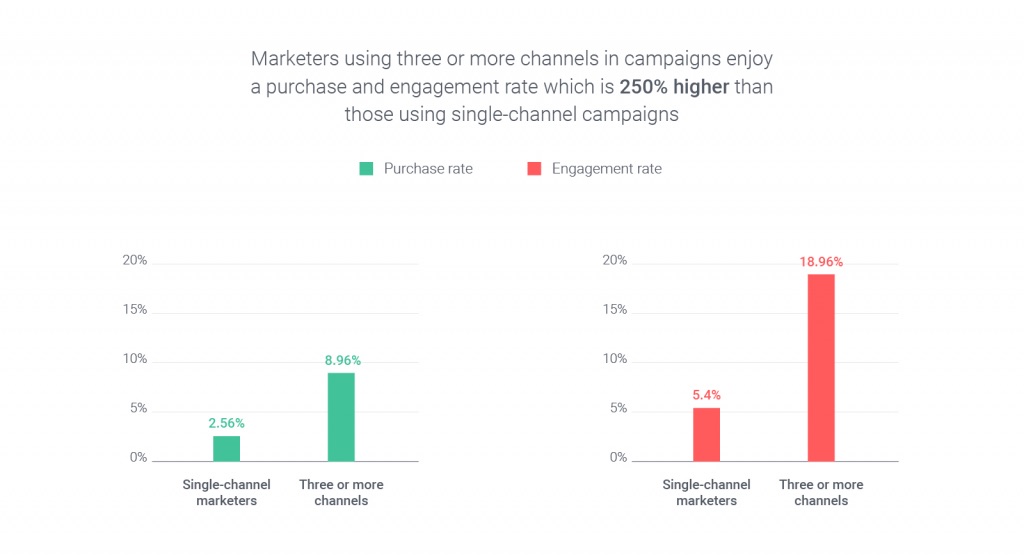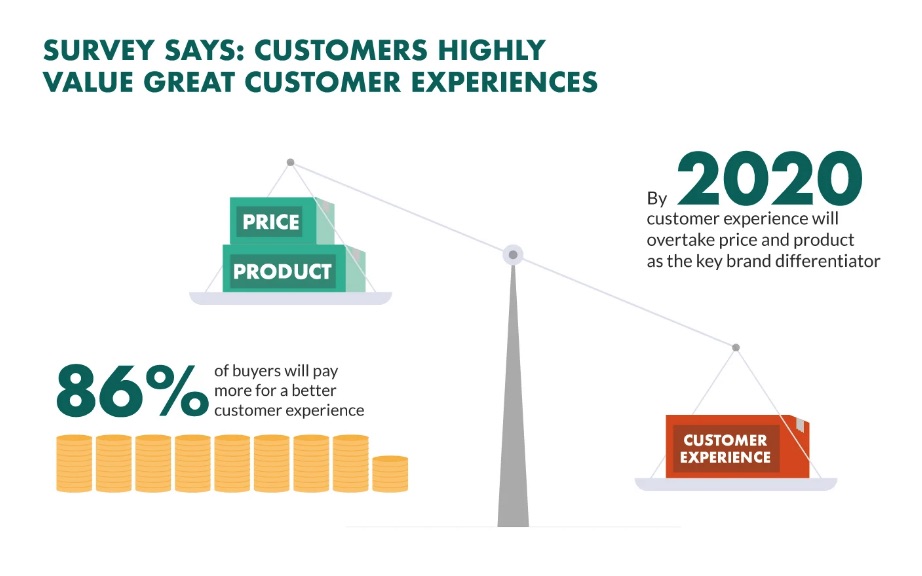Explore how consistent advertising builds mental availability, shaping recall in buying moments and supporting long-term brand growth.

Driving quality customer engagement is now more important for marketers than ever before. Effective engagement helps to better nurture leads through the funnel and consequently drive increased conversions, retention, customer lifetime value, and more. A massive 54% of consumers, however, say that companies need to fundamentally transform how they engage. There’s much lacking in modern consumer engagement tactics, and creating a single source of truth is an important key to changing this.
A single source of truth (SSOT) was a term first coined for use in information systems design, yet it’s just as relevant to a number of different fields today, including marketing. By definition, a SSOT means keeping your data in a single location and managing it from there. Employing one centralized location for data management makes it easier to analyze channel performance, create accurate reports, and make informed decisions.
Large brands that have branches and teams located in different places benefit considerably from having a SSOT, which allows them to access and use the same data profile regardless of where they are. Now that marketing is becoming increasingly multifaceted and complex, maintaining a SSOT is essential for businesses of every size, particularly when it comes to tracking engagement.
Key changes in the marketing and business landscape in recent years are the driving force that make a SSOT so important today. Here’s why:
The number of valuable marketing channels continues to grow, and so, therefore, does the amount of business data that comes with them. Consider online channels like social media platforms, websites, online ads, email, as well as offline channels like in-store interactions, call centers, text messages, TV and print advertising, etc. Businesses need to track such metrics as impressions, engagement, and conversions across each channel to stay on top of their marketing strategy.
The more channels there are, the more tools you need to manage them. Each tool has its own analytical features to help brands track their performance. That makes it very challenging to get a full picture of your marketing efforts as a whole. How can you determine how different audience touchpoints across channels work together to drive a sale?
Today, marketing data is so numerous and disparate that marketing teams simply can’t manage it manually. Few have the expertise to aggregate all data, assess its quality, and analyze it effectively. Even enlisting a full-time data manager isn’t enough to keep up with the ongoing stream of highly relevant engagement data available.
Establishing a single source of truth is a challenge for modern marketers. Once implemented, though, a SSOT offers so many benefits that it becomes difficult to envision how you once worked without it.
When managing your marketing engagement data using a number of different platforms, it is difficult to ensure each source delivers accurate and updated data. Each platform may track different data sources. Some may update in real-time while others pull data that is hours or days old.
When you aggregate and validate data in a single source, you can ensure uniformity with regards to how and when your reports are updated, improving data quality and analysis in the process. This, in turn, helps marketers increase their confidence in data analysis conclusions.
Introducing a single source of truth into your marketing set-up makes it possible to fill gaps in your understanding of the customer journey. Analyzing social media engagement, email engagement, website engagement, and offline interactions in isolation tells you very little about how these channels work together to influence purchasing decisions. With unified data, you get the full context pertaining to how different audience touchpoints influence consumers’ decision-making.
Marketing and sales teams can then take advantage of these new insights to create content that is more relevant and timely for their audience. They can also use cross-channel marketing with confidence. In a recent report conducted by Omnisend, it was found that purchase and engagement rates are 250% higher for marketers that use three or more channels. If you’re not investing in cross-channel marketing, you’re undoubtedly falling behind.

Each social media platform and monitoring tool has different ways to measure audience interactions. This creates challenges in effectively conducting any form of comparative analysis. And, to make it even more complex, these independent platforms also use the same terms to categorize data that is inherently unalike. A great example of this issue is social media impressions. Twitter, Facebook, and Instagram all define impressions their own way. Facebook impressions count the number of times an ad appears on a screen. Twitter counts an impression whenever a user sees a tweet. Third-party analytics tools can categorize them in other ways also.
Using a single provider to report these metrics makes it much easier to understand the difference between data types and see their relative impact accordingly. Considering how engagement performance metrics vary across social platforms as well as how they’re defined in the first place offers much more accurate and valuable insights.
There is a plethora of performance data relevant to various teams within an organization. Creating a single source of truth for all relevant data helps teams to derive new insights that they wouldn’t have otherwise. For example, factors related to PR efforts or customer service could impact marketing engagement. Once all teams understand how their efforts are interconnected, this encourages more cross-team collaboration. Empowering everyone with access to the same information helps them understand what impacts various business divisions and how to optimize collaboration efforts.
Exposing insights into the customer journey not only helps marketers deliver a relevant marketing message, but it also helps you serve your customers better. When sales, marketing, and customer service teams all have access to the same engagement data, it’s easier to identify what factors drive upsells, cross-sells, and churn. You can then adapt your overall strategy to fix any standing issues and optimize efforts that turn people into repeat customers. Having a complete picture of audience engagement data also makes it easier to segment and offer them a personalized customer experience, catered to their unique interests and needs.
This optimization can drive more revenue as well. In fact, 86% of buyers are willing to pay more for products when there’s better customer experience:

Creating a SSOT for engagement data makes it possible to analyze and learn exactly what kind of marketing message helps turn leads into paying customers. Having all your engagement data in one place helps you fill in gaps in the customer journey, especially with cross-channel interactions. For example, using the right marketing intelligence platform, it’s possible to see how leads discovered through Google search converted into paying customers through a Facebook ad.
Using insights like these to optimize your cross-channel marketing investment, deliver a more relevant message, and improve customer service overall can help drive your bottom line significantly. Creating a single source of truth will require a financial investment in terms of software technology, but it’s always worth the ROI it brings.
Once you understand what establishing a SSOT really means for your business, you need to set up an effective system to make it happen. With the amount of relevant business data out there, this is no simple task when done manually. You have to collect data from each marketing channel, unify it into a single system, store it, and analyze it. You also need to be able to update your data feeds quickly to keep up with the latest insights.
All these things considered, investing in marketing analytics software is the best way to move forward. Rather than just adding another tool to your arsenal, the right software can serve to replace tools you already use for storing and analyzing data from different marketing channels.
There are many options out there for marketing analytics software. Here are some factors to consider to help you choose the right option for your needs:
Most importantly, you need a tool that can collect data from all relevant sources. There are many tools that can pull together all your social media and advertising engagement data. However, you likely have other data that is relevant to your business, such as call center interactions, offline revenue data, or historical performance data.
How often does your analytics tool pull data? Weekly, daily, hourly, etc? Having up-to-date engagement data is incredibly valuable, especially if you’re investing in PPC advertising.
Make sure your software has all the features you need to analyze your engagement data the way you want to. Some solutions can create customized metrics based on what’s most important to your business. Make sure your solution also provides access to historical performance so you can use these insights to optimize future campaigns.
Best-in-class marketing analytics tools provide AI-driven automation features to help you get the most out of your data insights. Automating analytics reports is one example of this. Before investing in a tool, make sure it has the automation capabilities you need to maximize the value of having a single source of truth.
Most marketing analytics software solutions are self-service tools. However, some businesses may want and need guidance from professionals about how to maximize the value of their data insights. In that case, consider investing in a software solution that offers additional agency services to help you with your strategy.
The vast majority of marketers today work with disparate tools to analyze campaign performance. In the future, creating a single source of truth will become the standard for any organization that wants to invest in cross-channel marketing. The technology needed to create a centralized location for their data is already readily available and marketers that prioritize implementing it now will set themselves up to benefit the most in the long-term.